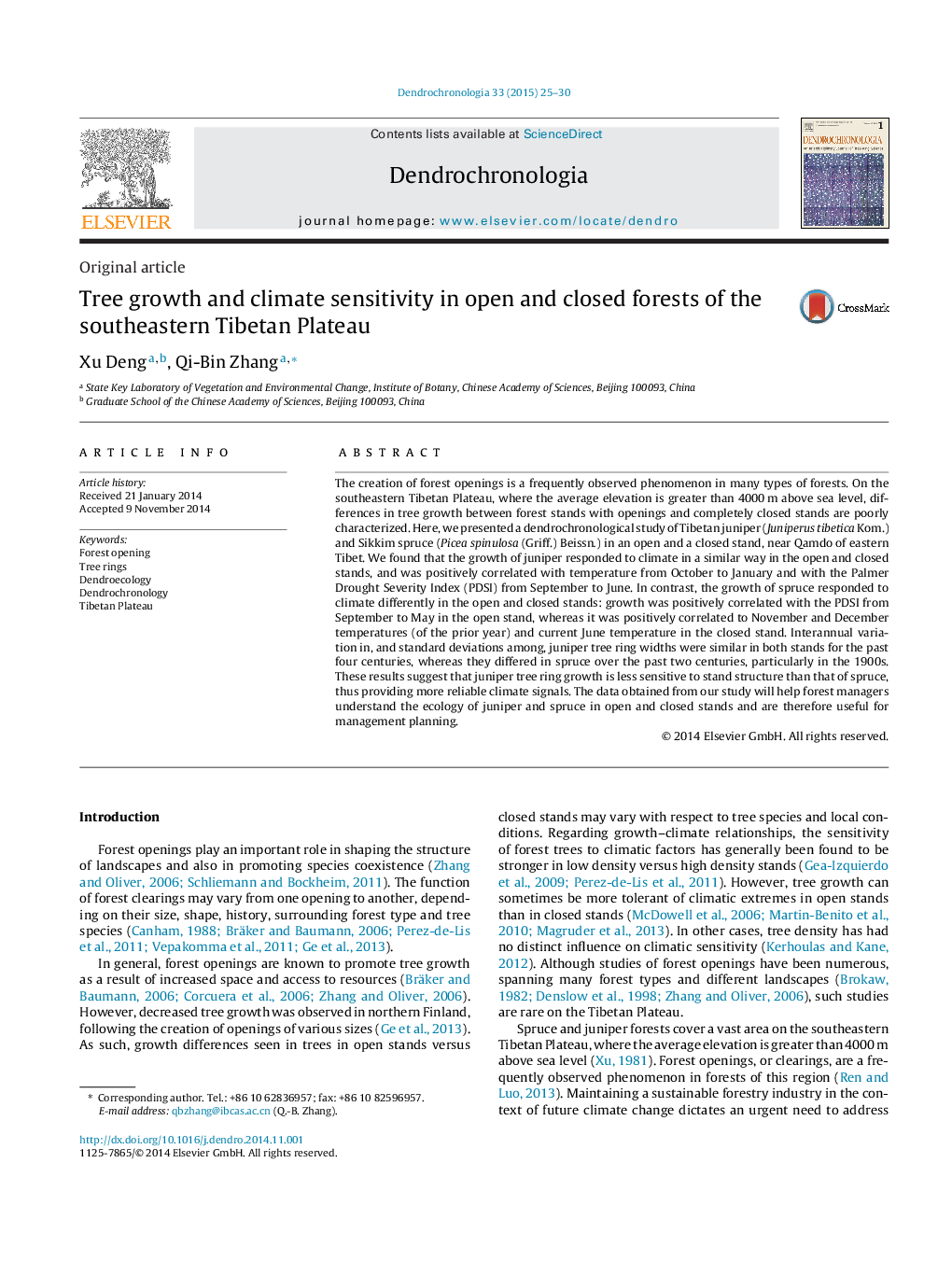| Article ID | Journal | Published Year | Pages | File Type |
|---|---|---|---|---|
| 6541378 | Dendrochronologia | 2015 | 6 Pages |
Abstract
The creation of forest openings is a frequently observed phenomenon in many types of forests. On the southeastern Tibetan Plateau, where the average elevation is greater than 4000Â m above sea level, differences in tree growth between forest stands with openings and completely closed stands are poorly characterized. Here, we presented a dendrochronological study of Tibetan juniper (Juniperus tibetica Kom.) and Sikkim spruce (Picea spinulosa (Griff.) Beissn.) in an open and a closed stand, near Qamdo of eastern Tibet. We found that the growth of juniper responded to climate in a similar way in the open and closed stands, and was positively correlated with temperature from October to January and with the Palmer Drought Severity Index (PDSI) from September to June. In contrast, the growth of spruce responded to climate differently in the open and closed stands: growth was positively correlated with the PDSI from September to May in the open stand, whereas it was positively correlated to November and December temperatures (of the prior year) and current June temperature in the closed stand. Interannual variation in, and standard deviations among, juniper tree ring widths were similar in both stands for the past four centuries, whereas they differed in spruce over the past two centuries, particularly in the 1900s. These results suggest that juniper tree ring growth is less sensitive to stand structure than that of spruce, thus providing more reliable climate signals. The data obtained from our study will help forest managers understand the ecology of juniper and spruce in open and closed stands and are therefore useful for management planning.
Related Topics
Physical Sciences and Engineering
Earth and Planetary Sciences
Atmospheric Science
Authors
Xu Deng, Qi-Bin Zhang,
